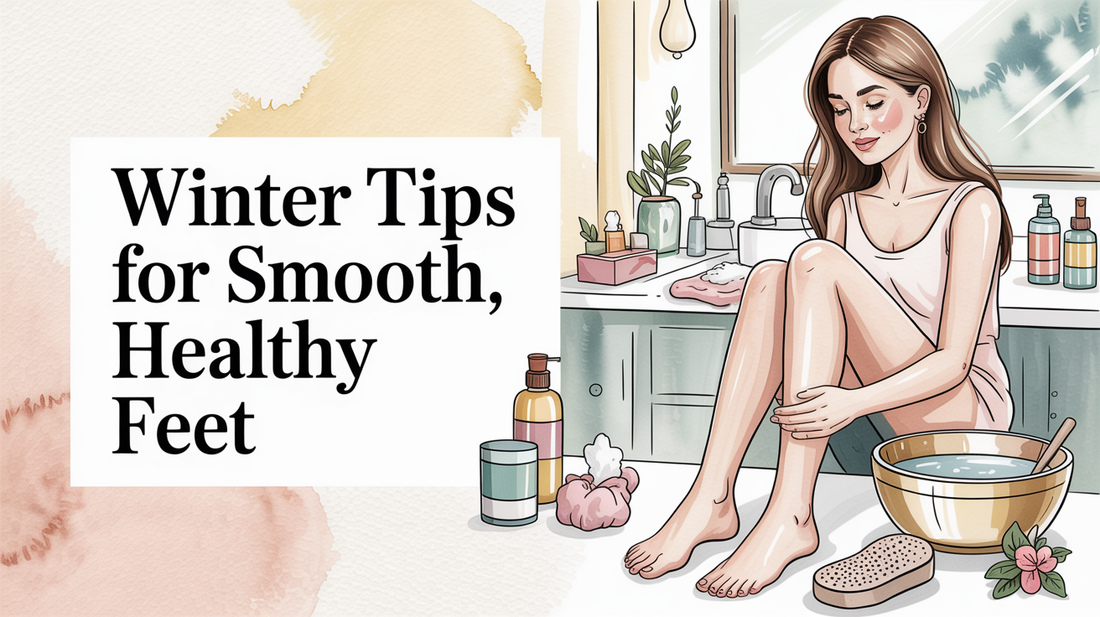How to keep feet healthy in winter dryness
winter foot care, cracked heels, moisture barrier — It’s common to have dry, cracked heels during winter as the cold air and indoor heating can strip the natural oils from our skin. To keep our feet healthy, we can incorporate specific strategies into our routine. This post is organized into three clear sections, offering actionable advice to maintain moisture and comfort for your feet.
Hydration layering 🧭
Keeping feet hydrated during the winter months is essential, and hydration layering can be a gentle way to create an effective moisture barrier. This approach involves applying products in a specific order to lock in hydration. Start with a lightweight moisturizer that contains ingredients like hyaluronic acid or glycerin to draw moisture into the skin. After that, layer on a heavier cream or balm that includes ceramides or shea butter to seal in that hydration.
For best results, apply your products on slightly damp feet to enhance absorption. Make sure to concentrate on areas like the heels and toes, which are often the driest. It’s also beneficial to reapply your moisturizer throughout the day, especially after washing your feet or spending time in dry indoor air.
- Use a lightweight moisturizer first to attract moisture.
- Follow with a thick cream or balm to lock in hydration.
- Apply to damp feet for optimal absorption.
- Pay special attention to heels and toes.
- Reapply as needed, especially after washing.
Try It Tonight: Calm, Fresh Feet ✨
- Wash feet with warm water and a mild cleanser; dry thoroughly between toes.
- Apply a small amount of Kissable Feet where needed; massage until absorbed.
- Let skin breathe; slip on breathable socks if desired. Patch-test first if you’re new to this foot cream.
Sock strategies ✨
Choosing the right socks is another crucial component of winter foot care. The materials and fit of your socks can significantly impact moisture management and skin comfort. Opt for moisture-wicking materials like merino wool or synthetic blends that effectively pull sweat away from the skin while keeping your feet warm. It's advisable to steer clear of cotton socks, as they tend to retain moisture, which can lead to dryness and potential fungal issues.
Change your socks daily or more often if your feet get sweaty. This helps prevent bacterial growth and irritation. You might also try wearing thin liner socks under thicker socks to reduce friction and provide an extra moisture barrier. Lastly, select seamless or flat-seam socks to minimize pressure points that could cause calluses.
- Select moisture-wicking materials for warmth and dryness.
- Avoid cotton socks to prevent moisture retention.
- Change socks frequently, especially if they become damp.
- Consider wearing liner socks for added comfort.
- Opt for seamless designs to reduce friction.
Why We Recommend a Gentle Helper 🌿
Kissable Feet is crafted for quick absorption and a soothing, non-sting feel. The nurse-crafted blend with tea tree, coconut, and calendula is designed for comfort and a clean finish—easy to add to a nightly routine.
- Fast-absorbing comfort—non-greasy finish.
- Gentle sensation suited for sensitive, overworked feet.
- Clean-leaning, bedtime-friendly scent.
Heel repair plan 🔍
Cracked and dry heels can be particularly troublesome during winter. A targeted heel repair plan can provide support for these challenges. To maintain soft heels, consider using a pumice stone or foot file to gently remove dead skin buildup a few times a week. This helps improve moisture absorption. Applying urea-based creams at night can also help soften thick skin, promoting a smoother texture.
Wearing cotton socks over moisturized feet overnight can enhance the absorption of your products and protect your bedding from absorbing the treatment. Additionally, soaking your feet in warm water with Epsom salts for about 10-15 minutes weekly can help soften the skin, making exfoliation easier.
- Gently exfoliate with a pumice stone a couple of times a week.
- Use urea-based creams overnight for softening effects.
- Wear socks over moisturizer to boost absorption.
- Soak feet in warm water with Epsom salts weekly.
- Consider heel balms for extra treatment.

